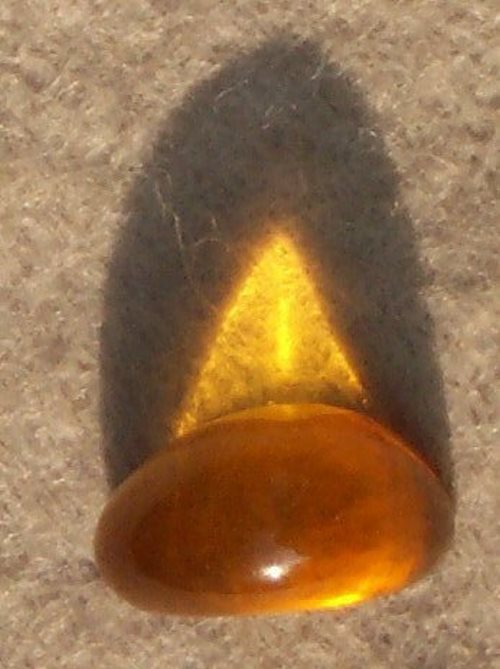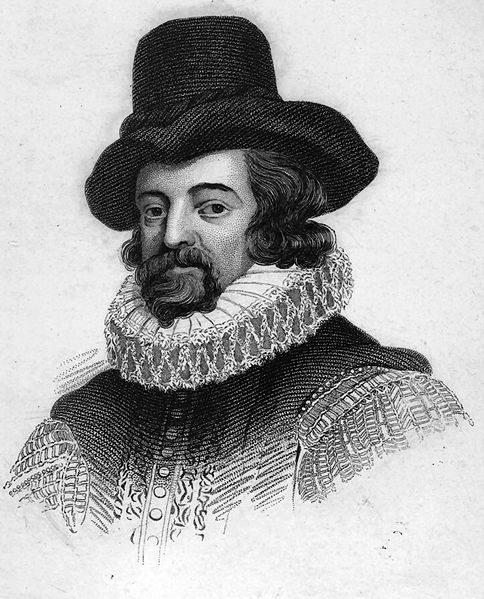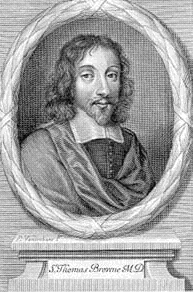|
|
|
|
ELECTRICITY ..
I have prepared this paper for certain friends who have expressed an interest in this line of research and have come to similar conclusions that have brought us together... It is my hope that this and subsequent papers will help them on their path of understanding. Anyone else who reads this is more than welcome to share in the knowledge and contribute. This is a work in progress and will cover many 'connections' so bear with me as I develop this section - Zorgon Etymology of Electricity In physics the term quantity of electricity refers to the quantity of electric charge. It is designated by the letter Q and in the SI system is measured in derived units called coulombs. Pre-English Origins The New Latin adjective electricus, originally meaning 'of amber', was first used to refer to amber's attractive properties by William Gilbert in his 1600 text De Magnete. The term came from the classical Latin electrum, amber, from the Greek ἤλεκτρον (elektron), amber.[1]The origin of the Greek word is unknown, but there is speculation that it might have come from a Phoenician word elēkrŏn, meaning 'shining light'. The letter Q was used for electric charge instead of the letter E because the letter was already used to represent the electron. Entry into English The word electric was first used by Sir Francis Bacon (1561-1626) to describe materials like amber that attracted other objects.[2][3] The first usage of the English word electricity is ascribed to Sir Thomas Browne in his 1646 work, Pseudodoxia Epidemica: Again, The concretion of Ice
will not endure a dry attrition without
liquation; for if it be rubbed long with a
cloth, it melteth. But Crystal will calefie unto
electricity; that is, a power to attract strawes
and light bodies, and convert the needle freely
placed In this context, an "Electrick" or "Electrick body" was a non-conductor, or an object capable of attracting "light bodies" (like bits of paper) when excited by friction; a piece of amber is "an Electrick", while a piece of iron is not. "Electricity", then, was simply the property of behaving like an electric, in the same way that "elasticity" is the property of behaving like an elastic.[5] ("Electric" continued to be used as a noun until at least 1913.)[6] It was not until later that the definition shifted to refer to the cause of the attraction instead of the property of being attractive.[7][5] Charge, in the electrical sense, was first used in 1767.[8] The term quantity of electricity was once common in scientific publications. It appears frequently in the writings of Franklin, Faraday, Maxwell, Millikan, and J. J. Thomson, and was even occasionally used by Einstein. However, over the last hundred years the term "electricity" has been used by electric utility companies and the general public in a non-scientific way. Today the vast majority of publications no longer refer to electricity as meaning electric charge. Instead they speak of electricity as electromagnetic energy. The definition has drifted even further, and many authors now use the word "electricity" to mean electric current (amperes), energy flow (watts), electrical potential (volts), or electric force. Others refer to any electrical phenomena as kinds of electricity. These multiple definitions are probably the reason that Quantity of Electricity has fallen into disfavor among scientists. Physics textbooks no longer define Quantity of Electricity or Flow of Electricity. Quantity of Electricity is now regarded as an archaic usage, and it has slowly been replaced by the terms charge of electricity, then quantity of electric charge, and today simply charge. Since the term electricity has increasingly become corrupted by contradictions and unscientific definitions, today's experts instead use the term charge to remove any possible confusion. Conceptual problems The tone or style of this article or section may not be appropriate for Wikipedia. Specific concerns may be found on the talk page. See Wikipedia's guide to writing better articles for suggestions.(December 2007) ED. Note: I left this Wikipedia note in place as I think it make give significant insight as to who may have written it. - Z However, new problems arise when we attempt to fix earlier problems by replacing the term "electricity" with the term "charge." Older scientific papers still exist, and their authors constantly discuss quantities of electricity and flows of electricity (meaning charge and current respectively.) Those historical authors know that their readers understand just one definition: the term electricity means charge and nothing else. Modern students who read physics papers from periods prior to 1930 (approx.) should make a continuous effort to remain aware of this issue. If historical physicists discuss quantities of "electricity" implying "electric charge," yet the modern reader assumes they're speaking of electrical energy, the writings of those physicists will be quite difficult to understand. Another problem arises because the population of physicists abandoned the term "electricity" without much public discussion and perhaps without much awareness on the part of their community. By silently altering the meaning of common and heavily-used terms, the scientific community caused an immense confusion on the part of the public. Whereas in the past the question "What is electricity?" was more or less easily answered, today the question itself has become meaningless. Is electricity a form of energy? Is electricity the same as electric charge? Is electricity nothing but a class of phenomena? Should we measure the quantity of electricity in coulombs, or should we instead use amperes, joules, or watts, or even volts? Physics texts and reference books supply no solid answer, since physicists have gradually abandoned electricity as a scientific term. And yet Quantity of Electricity still persists in its original definition in many contemporary references. For example, in the modern SI units of physics, the coulomb is defined both as the unit of electric charge and also the unit quantity of electricity. Encyclopædia Britannica defines the coulomb as the unit quantity of electricity. The Merriam-Webster dictionary, in definition 1a, defines electricity as charge. And until the late 1980s, the glossary in the CRC Handbook of Chemistry and Physics used the term "quantity of electricity" in place of "electric charge" in most of its definitions. Chemistry students will be familiar with Faraday's discovery that a unit quantity of electricity, when passed through an electrolysis cell, liberates a certain number of atoms of metal or gas. Under these definitions, electricity is not a form of energy. References
|
|
|
|
|
Amber Electric ...
The Greeks called amber "elektron" (which may come from a Phoenician word for the sun, meaning "golden"). They noticed its power to attract small bits of ash when rubbed with a cloth. This is static electricity, and the word "electricity" comes from "elektron" or amber. Source: Amber Minerals In ancient times, amber was carried by travellers for protection, and in the Far East, amber is the symbol of courage. Asian cultures regard amber as the 'soul of the tiger'; Egyptians placed a piece of amber in the casket of a loved one to ensure the body would forever remain whole. Early physicians prescribed amber for headaches, heart problems, arthritis and a variety of other ailments. It is reported in a number of books that the earliest occurrence of worked amber by man dates back to 7,000 BC and was discovered in West Zealand, Denmark. It was found in an ancient bog in a remarkable state of preservation as you can see in this external site picture, thanks no doubt to the anaerobic environment in which it had either been placed or fallen. The find is a pendant depicting four angular human figures and some striped patterning. Many of the Mesolithic articles depict human figures in one form or another. David Grimaldi in his book Amber - Window to the Past cites an earlier occurrence however. According to Grimaldi the earliest worked pieces of amber were discovered in Southern England, near the Cheddar/Creswell crags in an ancient cavern called Gough’s cave. The age of these beads lies between 11,000 and 9,000 years B.C. placing them in the earlier Palaeolithic. -SOURCE: A Brief Human History of Amber Amber and related materials (Resins) have been valued by man since the dawn of time and have many medicainal purposes. The Vikings, Greeks, Celts, Romans, Phoenicians, Mayans and Native Americans all valued it, traded it and used it.. Two resin products with fame of "biblical" proportions are Frankincense and Myrrh, two of the Magi gifts to the Christ child. Frankincense comes from 3 species of Boswellia: carteril, papyrifera, and thurifera. The finest known is Arabian and was formerly transported by camel caravans thru Palestine and Egypt, all the way to Greece and then Rome. Around 200 A.D., merchants were shipping over 3,000 tons per year, most of this headed for Rome. Myrrh comes
from Commifera trees and has been used as
perfume base, oils for Hebrew annointing
rituals, and for incense in cremations. As an
embalming agent, ancient Egyptians poured the
concoction of resins, gums and oils into the
cranial, chest, abdominal, and pelvic cavities
of bodies to be mummified. Resin has a
dehydrating as well as preservative property.
Bandages were soaked in it to wrap the bodies.
Apparantly this has worked, as evidenced by the
condition of bodies found after many thousands
of years. Egyptians also derived sandrac and
mastic from resins, two chemicals used in paint
pigments for ceramic jars and art on the walls
of tombs. The above information on Amber is included as a background because its properties of producing static electricity are the beginning of the story. Amber has long been used as a talisman by many cultures and is worth study. |
|
|
The Esoteric Connections Sir Francis Bacon ..
Francis Bacon, 1st Viscount St Alban (22 January 1561 – 9 April 1626) was an English philosopher, statesman, and essayist. He is also known as a catalyst of the scientific revolution. Bacon was knighted in 1603, created Baron Verulam in 1618, and created Viscount St Alban in 1621; without heirs, both peerages became extinct upon his death. Sir Francis Bacon, F.R.C. (1561–1626) led the scientific and philosophical thought of his day, introducing the “Baconian Method” of science, employing observation and experimentation. A leader of the Rosicrucians during his lifetime, his methods included Hermeticism, Alchemy, and esoteric studies as a natural part of human knowledge. The New Atlantis, a utopian work written in the last years of his life, and published posthumously in 1627, chronicles a voyage to the island of Bensalem (“Child of Peace”) off the Western coast of the Americas. The inhabitants of the island had seemingly accomplished The Great Instauration, that is, the regeneration and renewal of human arts and sciences encouraged by Bacon in his many writings. In this selection from the work, Bacon describes the ancient land of Atlantis and its Fall. The seventeenth century text has been slightly adapted for modern readers. The New Atlantis - by Sir Francis Bacon, F.R.C. |
|
|
The Esoteric Connections Sir Thomas Browne ..
Sir Thomas Browne (October 19, 1605 – October 19, 1682) was an English author of varied works which disclose his wide learning in diverse fields including medicine, religion, science and the esoteric. Browne's writings display a deep curiosity towards the natural world, influenced by the Scientific revolution of Baconian enquiry. A consummate literary craftsman, Browne's works are permeated by frequent reference to Classical and Biblical sources and to his own highly idiosyncratic personality. His literary style varies according to genre resulting in a rich, unusual prose that ranges from rough notebook observations to the highest baroque eloquence. Biography The son of a silk merchant from Upton, Cheshire, he was born in the parish of St Michael, Cheapside, in London on October 19, 1605. His father died while he was still young and he was sent to school at Winchester College. In 1623 Browne went to Oxford University. He graduated from Pembroke College, Oxford in 1626 after which he studied medicine at various Continental universities, including Leiden, where he received an MD in 1633. He settled in Norwich in 1637 where he practiced medicine and lived until his death in 1682. His first well-known work bore the Latin title Religio Medici (The Religion of a Physician). This work was circulated in manuscript among his friends, and it caused Browne some surprise and embarrassment when an unauthorised edition appeared in 1642, since the work contained a number of religious speculations that might be considered unorthodox. An authorised text with some of the controversial matter removed appeared in 1643. The expurgation did not end the controversy; in 1645, Alexander Ross attacked Religio Medici in his Medicus Medicatus (The Doctor, Doctored) and in fact the book was placed upon the Papal index of forbidden reading for Catholics in the same year. In Religio Medici Browne had confirmed his belief in the existence of witches. It is known that in later life he attended the 1662 Bury St. Edmunds witch trial,[1] where he was influential in the outcome of the trial.[2] In 1646, Browne published Pseudodoxia Epidemica, or, Enquiries into Very many Received Tenets, and commonly Presumed Truths, whose title refers to the prevalence of false beliefs and "vulgar errors." A sceptical work that debunks a number of legends circulating at the time in a paradoxical and witty manner, it displays the Baconian side of Browne—the side that was unafraid of what at the time was still called "the new learning." The book is significant in the history of science. Browne's last publication in his life-time,1658 was two philosophical Discourses which are intimately related to each other; the first Hydriotaphia, Urn Burial or a Brief Discourse of the Sepulchral Urns lately found in Norfolk, occasioned by the discovery of some Bronze Age burials in earthenware vessels found in Norfolk inspired Browne to meditate upon the funerary customs of the world and the fleetingness of earthly fame and reputation. Urn-Burial's
"twin" discourse is The Garden of Cyrus, or, The
Quincunciall Lozenge, or Network Plantations of
the Ancients, Artificially, Naturally, and
Mystically Considered, whose subject is the
quincunx, the arrangement of five units like the
five-spot in dice, which Browne uses to
demonstrate that the Platonic forms exist
throughout Nature. In 1671 King Charles II, accompanied by the Royal Court, visited Norwich. The courtier John Evelyn, who had occasionally corresponded with Browne, took good use of the Royal visit to call upon the learned doctor of European fame and wrote of his visit: His whole house & garden is a paradise and Cabinet of rarieties & that of the best collection, amongst Medails, books, Plants, natural things. During his visit to Norwich, King Charles II visited Browne's home. A banquet was held in the Civic Hall St. Andrews for the Royal visit. Obliged to honour a notable local, the name of the Mayor of Norwich was proposed to the King for knighthood. The Mayor, however, declined the honour and proposed the name of Browne instead. Sir Thomas Browne died on 19 October 1682, his 77th birthday. His skull became the subject of dispute when in 1840 his lead coffin was accidentally re-opened by workmen. It was not re-interred until 4 July 1922 when it was registered in the church of Saint Peter Mancroft as aged 316 years. Literary Works
|
|
| FAIR USE NOTICE: This page contains copyrighted material the use of which has not been specifically authorized by the copyright owner. Pegasus Research Consortium distributes this material without profit to those who have expressed a prior interest in receiving the included information for research and educational purposes. We believe this constitutes a fair use of any such copyrighted material as provided for in 17 U.S.C § 107. If you wish to use copyrighted material from this site for purposes of your own that go beyond fair use, you must obtain permission from the copyright owner. | |
|
|




